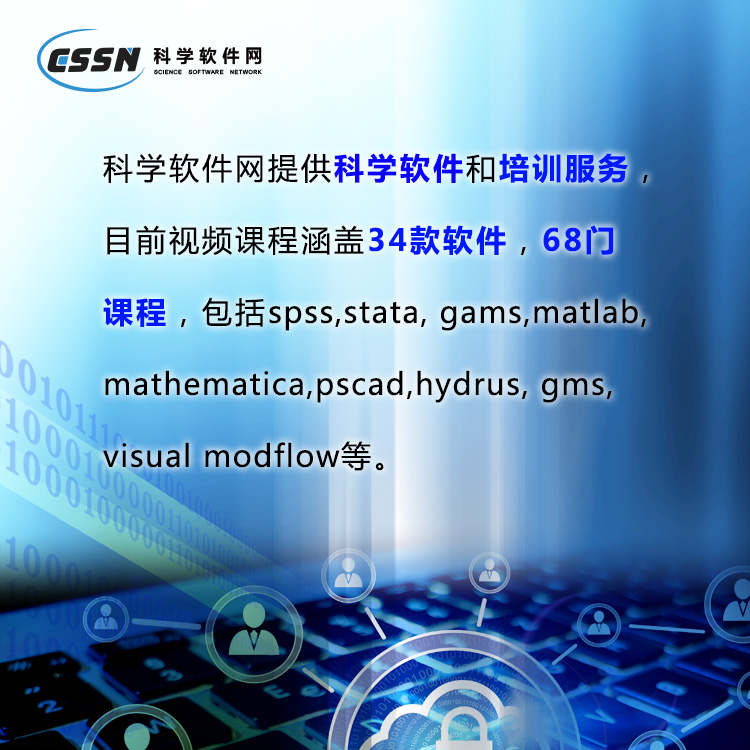- 2025-02-23 15:26 6094
- 产品价格:面议
- 发货地址:北京海淀 包装说明:不限
- 产品数量:9999.00 套产品规格:不限
- 信息编号:259980324公司编号:14832749
- 王经理 微信 18510103847
- 进入店铺 在线留言 QQ咨询 在线询价
lisrel软件优惠促销活动 诚信代理
- 相关产品:
科学软件网提供软件和培训服务已有19年,拥有丰富的经验,提供软件产品上千款,涵盖领域包括经管,仿真,地球地理,生物化学,工程科学,排版及网络管理等。同时还有的服务,现场培训+课程,以及本地化服务。
SSI创建于1971年,旨在应用统计理论,开发新的统计软件和完善已有的统计软件。产品被广泛应用于统计、社会科学、医药健康、教育、经济、工商管理、市场、环境科学、工程以及其他研究领域。每年,通过应用SSI软件得出的结果而在国际性刊物上发表的不计其数。
LISREL被公认为为的结构方程建模 (Structural Equation Modeling, 简称 SEM) 分析工具。通过运用路径图 (Path Diagram,又称通径图)直观地构造结构模型是LISREL的一个重要特点。在LISREL中,新增了多层次分析(Multilevel Modeling) 、广义线性模型 (Generalized Linear Regression, 又称通用线性模型)。
在过去的四十五年中,LISREL模型、方法和软件已成为结构方程模型(SEM)的同义词。SEM使社会科学、管理科学、行为科学、生物科学、教育科学等领域的研究人员对他们的理论进行了实证评估。这些理论通常归结为两种理论模型,可观测变量和不可观测变量。如果为理论模型的观测变量收集数据,那么LISREL可以用来将模型拟合为数据。
. Introduction
In practice, many multivariate data sets contain missing values. These missing values may result from nonresponses in a survey, absenteeism of participants in a longitudinal study, etc. The traditional way of dealing
with these missing data values is to use list wise deletion to generate a data set that only contains the complete
data cases. However, list wise deletion may result in a very small data set. It is a well-known fact that most
multivariate statistical methods require a large sample size, especially if the number of observed variables is
large. Consequently, alternative statistical methods for dealing with data with missing values are of interest.
Multiple Imputation (MI) and Full Information Maximum Likelihood (FIML) estimation are two popular
statistical methods for dealing with data with missing values. Both these methods are available in LISREL
(Jöreskog & Sörbom 2003). The Multiple Imputation module of LISREL implements the Expected
Maximization (EM) algorithm and the Markov Chain Monte Carlo (MCMC) method for imputing missing
values in multivariate data sets. Technical details of these methods are available in Schafer (1997) and Du
Toit & Du Toit (2001). Supplementary notes on these methods are also provided by Du Toit & Mels (2002).
In this note, the Multiple Imputation and FIML methods for data with missing values of LISREL are illustrated
by fitting a measurement model to a multivariate data set consisting of the scores of a sample of girls on six
psychological tests. This data set is described in the next section. The measurement model is described in
section 3. Thereafter, the method of Multiple Imputation is used to fit the measurement model to the data set
for girls. In section 5, the measurement model is fitted to the girls’ data by means of the FIML method
MAPGLIM
MAPGLIM is a -bit application that implements the Maximum A Priori (MAP) method to fit generalized linear models to multilevel data
LISREL (Jöreskog & Sörbom 2006) may be used to fit multiple group structural equation models to multiple
group data. Traditional statistical methods such as Maximum Likelihood (), Robust Maximum Likelihood
(RML), Weighted Least Squares (WLS), Diagonally Weighted Least Squares (DWLS), Generalized Least
Squares (GLS) and Un-weighted Least Squares (ULS) are available for complete multiple group data while
the Full Information Maximum Likelihood (FIML) method is available for incomplete multiple group data.
The , RML, WLS, DWLS, GLS and ULS methods for multiple group structural equation modeling are
described in Jöreskog & Sörbom (1999) while the FIML method is described in Du Toit & Du Toit (2001).
,专注,专心是科学软件网的服务宗旨,开发的软件、传递前沿的技术、提供贴心的服务是我们用实际行动践行的至高目标,我们会为此目标而不懈努力。













